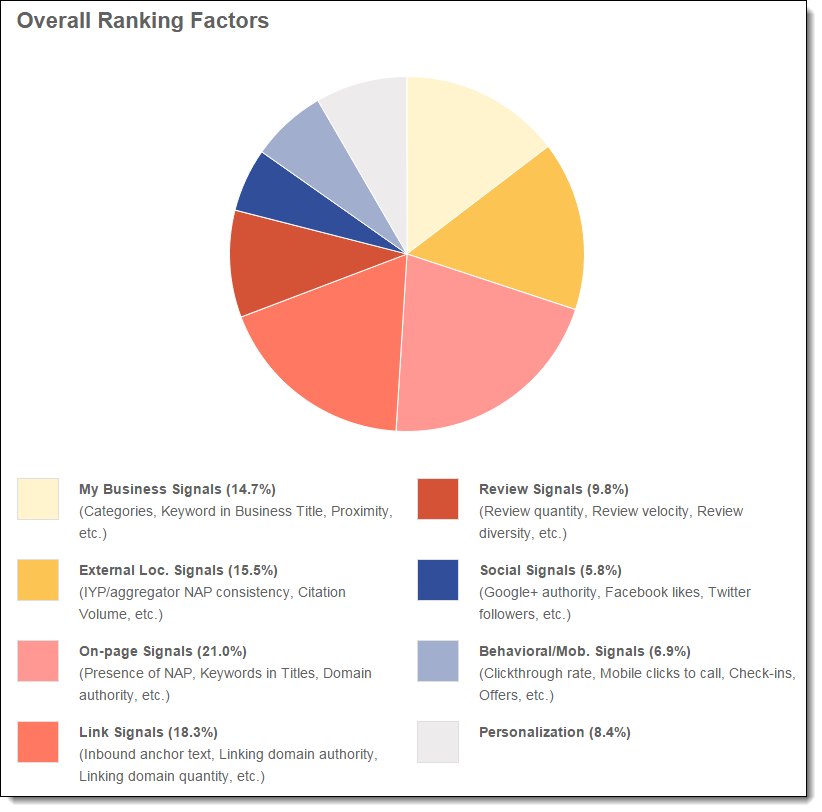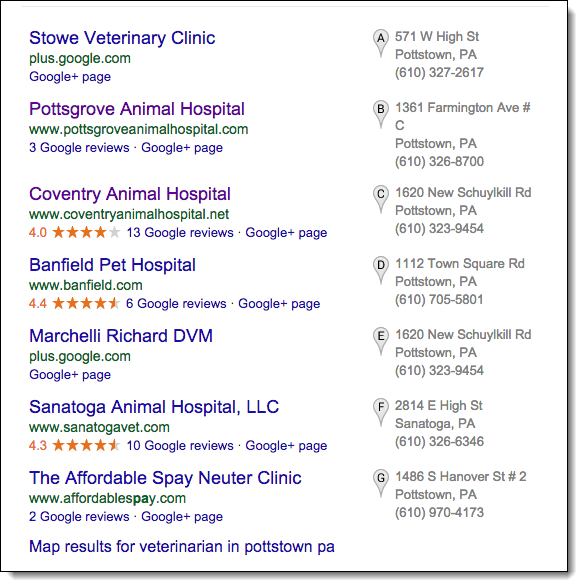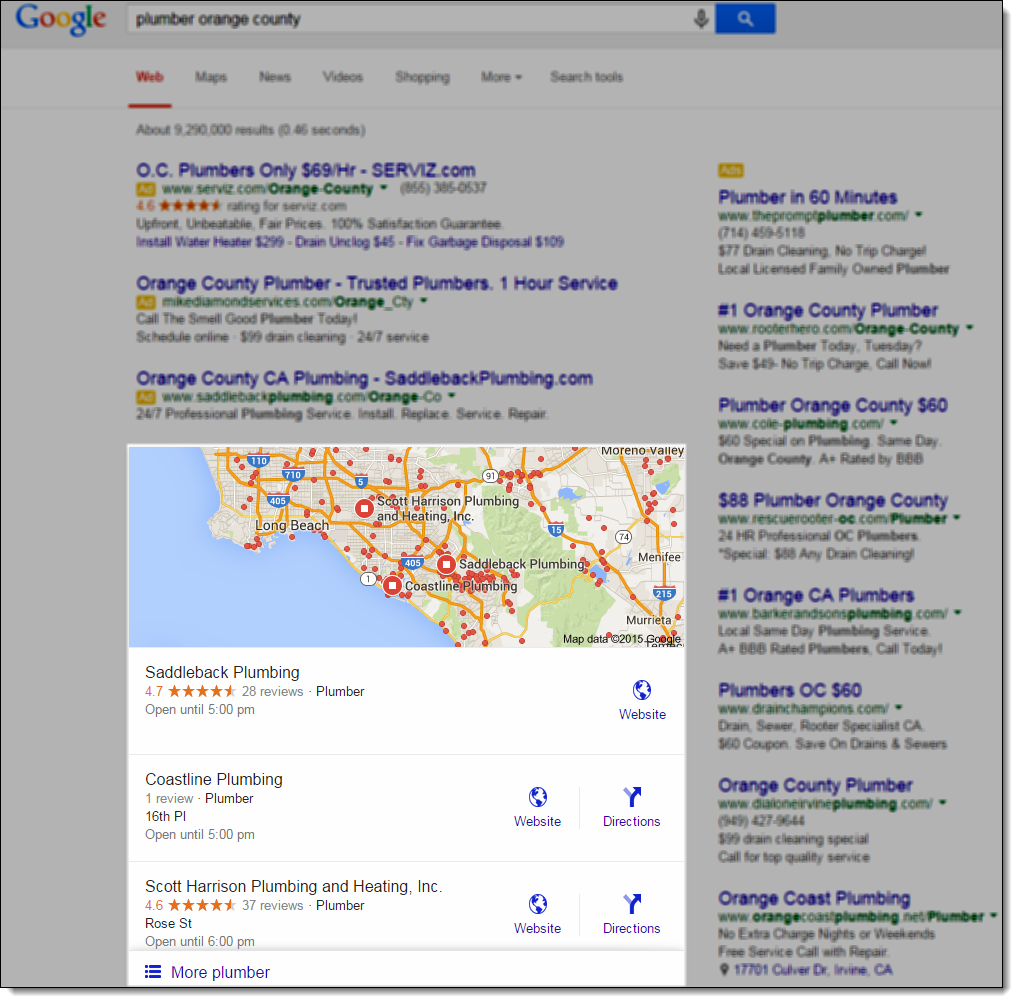Blog
Google is known for changing things up on a regular basis when it comes to their algorithms, but when it comes to the design of their search engine’s search result pages (SERPs), they tend to be a little more careful. When they do make changes, it’s typically done so within controlled test groups (i.e. only certain servers or countries will see the change). As a result, there is usually little talk regarding UX changes on Google.com in comparison to algorithm introductions, updates, refreshes and the like. But late last week, Google introduced a major redesign of their local map pack that is anything but subtle.
What Happened to Google’s Local Map Pack?
The 7-pack is no more. Google's local map pack, which is also referred to as the “7-pack,” has been in place for quite some time. Over the past couple of years, there have been some indications of the decline of map pack visibility due to algorithm changes, as well as due to some SERP tests, such as the introduction of the local carousel and local 3 pack.
But the local carousel only lasted a little over a year before Google pulled the plug on it, and the local 3-pack remained within SERPs. So you can imagine the shock now reverberating throughout the local SEO industry when we found out that Google had decided to replace the 7-pack with a new and improved 3-pack.
Below is a screenshot of the typical 7-pack you would have seen in recent years:
And below is a screenshot of the 3-pack in its most recent form:
Aside from the obvious loss of four results within the map pack, there are some rather significant changes that have taken place in Google’s most recent UX revision.
The Google map pack changes are as follows:
- Phone number is no longer displayed on desktop. The option to click-to-call from the desktop, let alone see the phone number associated with a local listing, no longer exists. However, when searching from your mobile phone, you do have the option of click-to-call, which when pressed, will immediately connect you to the phone number associated with the Google My Business listing for the respective company.
- Full address is no longer displayed. The address is still displayed within the map pack, but it only displays the street address now; not the city itself. You also have the option to click the Directions button either on your mobile phone or desktop, which will provide you with directions to the address associated with the respective company’s Google My Business profile from your present location. With the introduction of Google’s Pigeon algorithm, we know Google is showing more preference to businesses within the immediate area of the person doing the search (or for the location they are searching). Perhaps this suggests that Google will no longer be displaying Google My Business listings within the map pack unless they are specifically located within the searched city, or unless their service area specifically states they service people there?
- No more URL displayed on desktop or mobile. Previously, you could see the URL that was associated with the Google My Business profile within the map pack, but now it just shows the brand name and a website icon that links directly to the website URL associated with the respective company’s Google My Business profile.
- No more link to the Google+ page. Google My Business (a.k.a. Google Plus and Google+) profiles are necessary in order to even compete within the local map pack, so it comes as a surprise to pretty much everyone in the industry that Google would remove the link associated with a business’s G+ page; especially considering that Google+ has been pretty much forced down everyone’s throat since its introduction.
- Business hours are now easily seen. Now you can very easily see how long a business is open until; this is the one feature introduction that actually makes sense.
Why a 3-Pack instead of the 7-Pack?
Of course, this was all done under the premise that it’s best for the end user. Barry Schwartz of Searchengineland.com reported Google as having stated, “We are constantly exploring the best way to bring a better search experience to our users. This update provides people with more relevant information, including photos, reviews and prices, for searches that have multiple results for a given location.” Time will tell if this UX change is indeed in the best interest of the end user searching via Google.com, but it’s not hard to see why many within the search industry are speculating that this is just one more way for Google to force people to use paid search.
How Does this Affect Local Businesses Engaged in Local SEO?
As you can see in the above screenshot, the new 3-pack is very large in nature, so it doesn’t seem to suggest that there will be an increase in click-through rates for any websites listed in Google organic search. What is painstakingly obvious is that the local landscape has now become more than twice as competitive as it was previously. Any local businesses previously listed within positions E-F of the 7-pack will likely see a sharp decline in views, as well as clicks and calls. And on the flip side, anyone in positions A-C (which were previously the top 3 local listings) will see an increase in those same metrics.
What Can I Do to Help Secure a Position in the New 3-Pack?
SEO is very secretive in nature. Not by our choice, but rather by design. Google shares as little as possible with the public when it comes to their algorithms, as they don’t want people to game the system. However, there have been plenty of surveys done within the past years that indicate the most likely things that need to be done in order to successfully rank at the top of local search results.
The most recent survey is 2014 Local Search Ranking Factors, which was conducted by Moz.com. The survey clearly outlines which ranking factors are most important for local search, as argued by 40 of the leading influencers in this industry.
The chart below depicts the overall importance of these ranking factors:
[caption id="attachment_2389" align="aligncenter" width="822"] (Image courtesy of the 2014 local search ranking survey, provided by Moz.com)[/caption]
(Image courtesy of the 2014 local search ranking survey, provided by Moz.com)[/caption]
Breaking it down more specifically, below are the top five things you can do as a business owner to help increase your local visibility online:
- Establish a physical address in the city you want to target.
- Select the proper categories within your Google My Business profile.
- Maintain consistently structured citations! This means your NAP should always be the same, no matter where it is listed online (i.e. a directory profile, a news article, forum comments, etc...).
- The authority (i.e. trust, reputation, etc…) of the structured citations you receive is also very important. Long gone are the days of quantity beating out quality when it comes to SEO. Nowadays, “who?” is much more important than “how many?”
- Use the same NAP (Name, Address, Phone number) on your website and on your Google My Business profile.
Rest assured that if you have hired iMarket Solutions to help increase your online visibility through our SEO services, we are already following these best practices. Should you have any questions or concerns that are not outlined above, please do not hesitate to reach out to your online marketing coordinator for further clarification.
If you need any assistance with improving your local, organic or paid visibility online,
feel free to reach out to us for help: (800) 825-7935.


